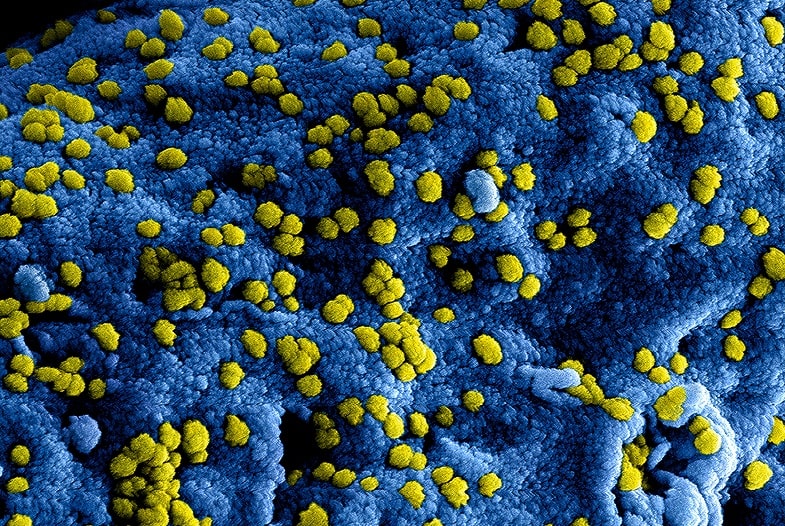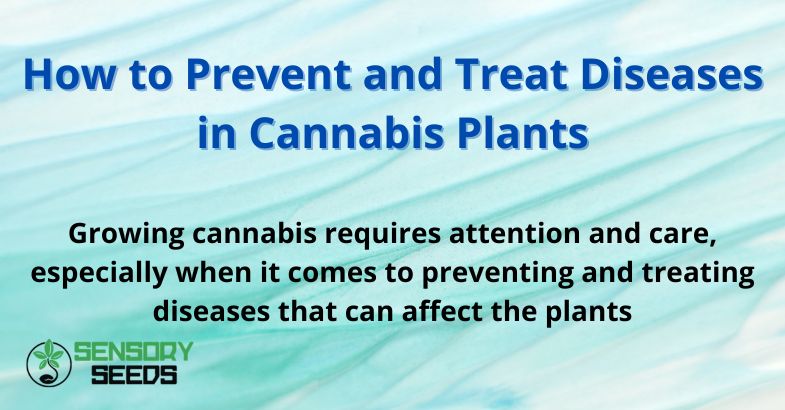Modified on: 24/08/2024
Growing cannabis requires attention and care, especially when it comes to preventing and treating diseases that can affect the plants
In this article, we will explore the various types of diseases that can affect cannabis plants, effective prevention strategies, and the most recommended treatment methods for marijuana seed growers.
Health of Cannabis Plants
The health of cannabis plants depends on many factors, including soil quality, growing environment, irrigation, and pest and disease management. An experienced grower knows that prevention is crucial: it is much easier to prevent a disease from taking hold than to combat it once it has established itself. Additionally, knowing common diseases and their symptoms allows for timely intervention, minimizing damage.
Read also: How much water does a cannabis plant need?
Common Diseases of Cannabis Plants
Cannabis plant diseases can be divided into two main categories: fungal and bacterial. Each type of disease has specific characteristics and requires different management and treatment approaches.
Fungal Diseases
Fungal diseases are among the most common that affect cannabis plants. They often appear in humid and poorly ventilated environments. Some of the most frequent include:
- Gray Mold (Botrytis cinerea): This disease is easily recognizable by the presence of a gray mold that covers the tops of the plants. Gray mold thrives in high humidity conditions and can quickly devastate a crop if not controlled. Initial symptoms include brown or gray spots on leaves and flowers.
- Powdery Mildew (Erysiphe cichoracearum): Powdery mildew appears as a white powder on leaves, stems, and flowers. It prefers humid environments and moderate temperatures. Although it is not usually lethal, powdery mildew can significantly reduce the quality and yield of the plants.
- Rust (Puccinia spp.): Rust infections manifest as yellow or brown spots on the leaves. This disease can weaken the plants and reduce photosynthesis, leading to stunted growth.


Bacterial Diseases
Bacterial infections are less common than fungal ones but can still cause severe damage if untreated. The most common bacterial diseases include:
- Bacterial Stem Rot (Erwinia spp.): This disease causes stem rot and can lead to plant death. Symptoms include watery and dark lesions on the stems and an unpleasant smell due to decomposition.
- Bacterial Canker (Agrobacterium tumefaciens): This manifests as tumor-like growths on the stems and roots. These growths can disrupt the flow of nutrients and water, leading to plant decline.
Disease Prevention
Prevention is the first step to keeping cannabis plants healthy and preventing them from contracting common diseases. Here are some fundamental strategies:
Soil Preparation
Soil is the foundation of plant health. Using well-drained, nutrient-rich soil is essential. Before planting, it is advisable to sterilize the soil to eliminate potential pathogens. Adding organic compost can improve soil structure and increase plants’ resistance to diseases.
Crop Rotation
Crop rotation helps prevent the buildup of soil-specific pathogens. Avoid planting cannabis in the same place year after year to significantly reduce the risk of diseases.
Humidity Control
Humidity is a key factor for the development of fungal diseases. Maintaining adequate ventilation and reducing humidity around the plants can prevent fungal proliferation. Drip irrigation is an effective technique to keep the soil moist without wetting the leaves, thereby reducing the risk of fungal infections.
Cleaning and Disinfection
Tools used for cultivation should be cleaned and disinfected regularly to avoid the transmission of pathogens. Hands and gloves should be washed frequently, especially after handling infected plants.
Disease Treatment
Despite the best prevention practices, cannabis plants can still get sick. Here are some treatment methods for the most common diseases:
Fungicidal Treatments
For fungal diseases, fungicides can be very effective. Copper-based fungicides are commonly used to treat gray mold and powdery mildew. It is important to apply fungicides according to the manufacturer’s instructions to avoid damaging the plants.
Removal of Infected Plants
In the case of severe infections, it may be necessary to remove and destroy the infected plants to prevent the disease from spreading to healthy plants. This drastic measure is often the last resort but can be necessary to save the rest of the crop.


Improving Growing Conditions
Modifying the growing environment can help manage diseases. Increasing ventilation, reducing humidity, and improving light can all contribute to making the environment less hospitable for pathogens.
Pest Management
Pests can be vectors of diseases, so managing them is crucial. Insects like aphids, thrips, and whiteflies can transmit viruses and bacteria to cannabis plants. Using natural insecticides, such as insecticidal soap and pyrethrum extracts, can help control pest populations without harming the plants.
Monitoring and Diagnosis
Regular monitoring of plants is essential for early detection of disease symptoms. Examining the plants daily allows for the identification of problems as they arise and quick intervention. Accurate diagnosis of diseases is equally important: many symptoms can be similar but require different treatments. Consulting reliable resources or agricultural experts can help correctly identify diseases.
Read also: How to grow cannabis seeds and where you can do it?
Conclusion
With a thorough knowledge of common diseases and management techniques, it is possible to keep cannabis plants healthy and ensure abundant and high-quality harvests. Maintaining an optimal growing environment and selecting quality cannabis seeds allow for lush cannabis plants!
Explore our online shop for cannabis seeds at Sensoryseeds and discover the best cultivation techniques on our blog!









